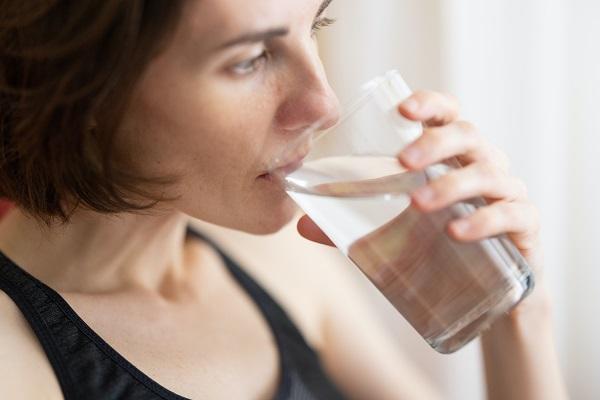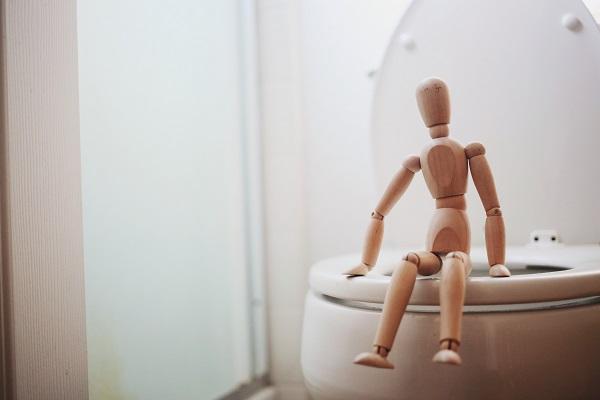
Postpartum Recovery Series Part 5
Managing Urinary Incontinence After Childbirth
Urinary incontinence is the unwanted leakage of urine, also known as accidental bladder leakage. There are a few main types. Stress urinary incontinence is leakage associated with activities, such as lifting, exercising, coughing, sneezing, or laughing. Urge urinary incontinence is leakage associated with the urge and people often experience leaking on the way to the toilet. There is also mixed incontinence which is a combination of the two types. Continence is managed by the complex interaction of bladder physiology, central nervous system, and the pelvic floor muscles. When there is dysfunction in any part of the three systems, incontinence may occur.
 The pelvic floor muscles are a hammock-like shape group of muscles that underlie the saddle region. These muscles are working continuously throughout the day to keep us from leaking. But, they also do the opposite and allow us to open the sphincter and void. Giving birth is a very common cause of urinary incontinence; the prevalence is 21% for those who gave birth vaginally and 15.9% of those who gave birth via cesarean section. In postpartum women, stress urinary incontinence is far more common than urge incontinence by two-fold. Other risk factors of urinary incontinence include maternal age at 35 or older, increased initial body mass index, pre-existing urinary incontinence (during pregnancy or before), and increased number of births.
The pelvic floor muscles are a hammock-like shape group of muscles that underlie the saddle region. These muscles are working continuously throughout the day to keep us from leaking. But, they also do the opposite and allow us to open the sphincter and void. Giving birth is a very common cause of urinary incontinence; the prevalence is 21% for those who gave birth vaginally and 15.9% of those who gave birth via cesarean section. In postpartum women, stress urinary incontinence is far more common than urge incontinence by two-fold. Other risk factors of urinary incontinence include maternal age at 35 or older, increased initial body mass index, pre-existing urinary incontinence (during pregnancy or before), and increased number of births.
Good news– incontinence can be improved! There are a ton of lifestyle habits and strategies that you can utilize immediately to help decrease or prevent urinary incontinence after childbirth.
Practicing healthy bladder habits:
- Maintain hydration! (especially if breastfeeding, but also for the health of your bladder). Most people assume more water intake means more bathroom trips. But it can also be the opposite–not drinking enough can lead to more urgency and thus more trips to the bathroom due to an increase in the concentration of the urine. It can also weaken the bladder muscle if you are not filling the bladder to its capacity. Staying hydrated also helps manage constipation. The goal is to achieve at least ½ of your body weight in ounces (For example, someone who is 150 pounds should strive to drink at least 75 ounces of water; you do not need to convert the units). If it is hot or you are exercising, you should have above this amount, but not excessively so, depending on your activity.
- Decreasing bladder irritants. Common irritants include caffeine, carbonated beverages, spicy foods, chocolates, citrus, vinegar and others. Increased intake of the irritants listed can increase bladder sensitivity and lead to incontinence.
- No rushing on the toilet! This can be difficult for many postpartum women who are now taking care of a newborn baby. If you can, take the time to allow your void to occur without straining, and even some time after the void has ended with a few diaphragmatic breaths. The muscles may have been injured during childbirth and may require extra time to release during this recovery period.
- No straining. I introduced this in the last point, but no straining to void! If you are feeling incomplete emptying of the bladder, there are other strategies that can help such as double voiding (after voiding, stand up, and sit back down and see if more naturally comes out), upper body circles while on the toilet, making a fist with your hand and putting pressure on bladder-push down as you lean body forward, and also managing constipation!
- Managing constipation. Make sure you are hydrated enough, taking walks or increasing activity level, using a squatty potty are some strategies that can help manage constipation.
- No “just-in-case” peeing. It may make sense to pee prior to leaving the home, before going on a walk “just-in-case,” but this can create a habit for your bladder to develop fake urges over time. Sometimes these fake urges are so overwhelming that they actually lead to more leakage!
- Walk calmly to the toilet. Just like there should be no rushing while you’re ON the toilet, there should be no rushing on the way to the toilet as well. This is another very common trigger that can spark strong intense bladder urges that can cause leakage.
- To kegel or not to kegel? See below for more on this.
Many women assume that because they are experiencing urinary incontinence, their pelvic floor muscles are weak. This may be true for some, but more often than not, I find that the muscles that are injured can get into a “guarded” position and sometimes create overactivity (muscle fibers become short and tight.) Although “tighter” may seem like it’s better, in actuality, it is dysfunctional and contributes to urinary incontinence. We want to make sure we have the full range of motion in our pelvic floor muscles, so it can shorten when necessary, but also lengthen when necessary. For this reason, nobody should assume that “kegel” exercises are the best and only exercise to do.
Get an individual assessment from your pelvic floor physical therapist and receive education and a program that is best suited for you based on how the pelvic floor muscles and your overall body systems are coordinated.
References:
Rortveit G, Daltveit AK, Hannestad YS, Huskaar S. Urinary Incontinence After Vaginal Delivery or Cesarean Section. N Engl J Med. 2003;348:900-907.
Thom DH & Rortveit G. Prevalence of postpartum urinary incontinence: a systematic review. Acta Obstetricia et Gyencologica. 2010;89: 1511-1522.
Cerruto MA, D’Elia C, Aloisi A, et al. Prevalence, Incidence and Obstetric Factors’ Impact on Female Urinary Incontinence in Europe: A Systematic Review. Urol Int 2013;90:1-9. doi:10.1159/000339929
More Articles in This Series
{modulepos position=”postpartum”}
